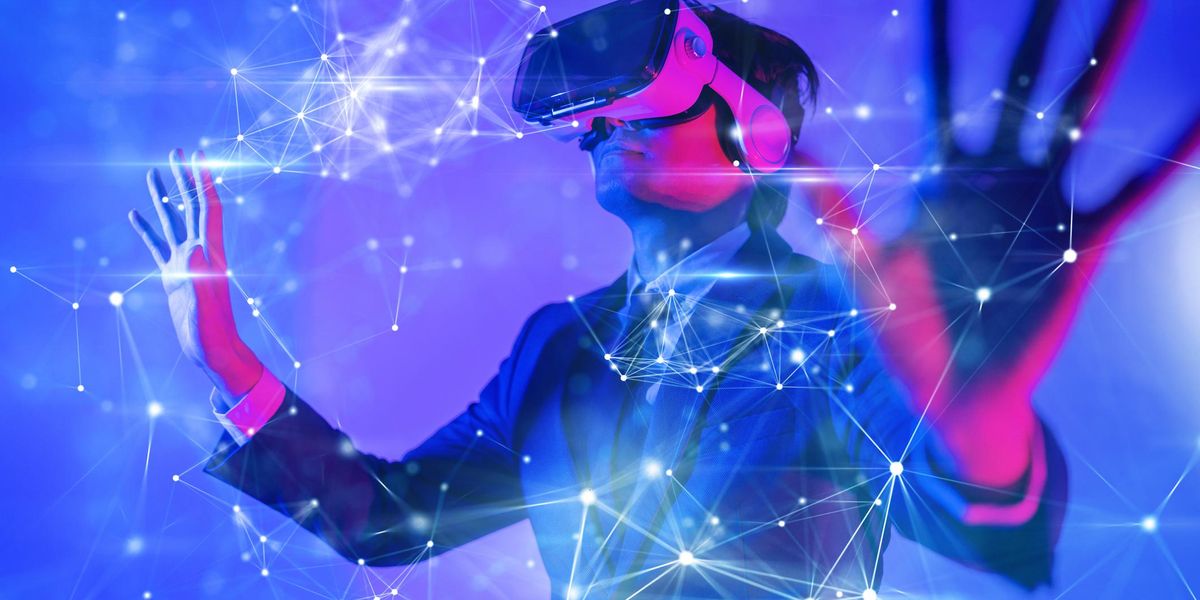With advancements in digital healthcare technologies such as AI, 3D printing, VR/AR, nanotechnology, and robots, the future of medicine is taking form right before our eyes. We must become acquainted with the most recent inventions to handle technological control, not the other way around. The future of medicine lies in collaborating with technology and clinicians to embrace changes in the healthcare environment, allowing us to remain relevant for years to come.
Are you concerned that robots and artificial intelligence will take away the work of physicians, nurses, and other medical professionals? Maybe you’re worried that AI will take over the planet in a few years.
These are all examples of fake news, half-truths, and other visual dystopias, and maybe a more trendy approach to providing alternate facts regarding the future of healthcare business. More crucially, all of these inquiries have one thing in common: apprehension about the unknowns of the future.
Nobody can stop technology from progressing. At some point, the power of digital technology will transform every aspect of our existence. As a result, we must keep our minds open to the prospect of technology altering the world as we know it.
Humanity and technology working together to improve healthcare
Many people believe that technology is the only route ahead. They feel that we can only benefit and improve our lives if we embrace technological breakthroughs and remain at the forefront. If we keep the concept of “two steps ahead of it” in mind, the collaboration between technology and people might provide enormous benefits.
Digital technology in healthcare and medicine can change ineffective healthcare systems into effective ones, provide cheaper, quicker, and more effective disease remedies (such as Ebola or AIDS), and equalize the interaction between experts and medical patients. Technology has the potential to help us live better lives in healthier societies.
The adage “everyone must be the master of his own house” is often used. It is critical to begin the future by enhancing our health through these technologies and changing our thinking about health in general, as well as healthcare and medicine.
So, how would it work in practice? Throughout this essay, we will look at 10 ways that medical technology is shaping healthcare.
1. Computer-Aided Design

Artificial intelligence (AI) is a powerful instrument that has the potential to completely transform healthcare. AI algorithms that can analyze medical information can devise treatment regimens, manufacture medications faster than any present clinician, and even detect malignant and noncancerous tissue samples.
Atomwise mines a library of molecular structures for medicines using supercomputers. In 2015, the company initiated a virtual search for safe, current drugs that may be reengineered to treat the Ebola virus. The company’s AI system predicted the discovery of two drugs to lessen Ebola infectivity.
DeerMind, a division of Google, recently created an AI for breast cancer analysis. On pre-cleared sets of data, the new technology outperformed human radiologists by 11.5% in distinguishing breast cancer.
These two firms are just two of many that are utilizing AI technology to push healthcare into the future. These firms are real-life examples of what we should expect on the horizon if we give ourselves up to AI in healthcare, from disrupting medical imaging to inventing new pharmaceuticals to mining medical information.
2. Augmented reality

Virtual reality (VR) is transforming the lives of both physicians and patients. In the future, you may go to Spain or back home while in a hospital bed, or you might witness surgeries as if you were the surgeon!
VR is employed in a variety of scenarios, including educating prospective surgeons and allowing qualified surgeons to practice procedures. Companies such as Osso VR and ImmersiveTouch are creating similar software applications, and thus far, the results are encouraging. According to recent research, virtual reality-trained surgeons outperformed their traditionally trained peers by 230%.
Patients are also benefiting from technological developments, with pain management being one area of progress. During labour, women are given VR headsets that allow them to picture a peaceful scene. Patients suffering from cardiac, neurological, gastrointestinal, and post-surgical pain have reported a reduction in discomfort while utilizing VR as a stimulus. A 2019 pilot study found that patients undergoing surgery experienced less fear and pain, as well as a better overall healthcare experience.
3. Virtual Reality

Unlike VR, Augmented Reality (AR) allows users to maintain contact with reality while receiving information as quickly as feasible. Because of these distinguishing traits, both on the receivers’ and medical providers’ sides, augmented reality is becoming a driving force in the future of healthcare.
For medical practitioners, it might help medical students better prepare for real-world procedures while also allowing current surgeons to enhance their skills. Students learn about anatomy by using the HoloAnatomy app on the Microsoft HoloLens. Medical students now have access to realistic and comprehensive, although digital, depictions of human anatomy, allowing them to learn without having to use actual individuals.
Another potential firm, Magic Leap, is working on something a little different with its mixed reality headgear. Magic Leap has worked with XRHealth, SyncThink for brain health, and Brainlab, a German technology firm that will apply its technologies to healthcare, to build the therapeutic platform. Although no commercial goods have yet been released, we may expect to see these collaborations filling the healthcare industry shortly.
4. Health-tracking devices, wearables, and sensors, Health Data collection
Patients’ and people’s empowerment involves taking better care of their health utilizing technology such as wearables, health trackers, and sensors, which is closely related to the future of healthcare and medicine. For those with hearing impairments, advanced hearing aids are an essential part of this technological revolution, providing improved quality of life and health management. These are fantastic instruments that help us learn more about our health and have greater control over our lives.
Devices such as the Fitbit Ionic, which monitors sleep and tracks exercises, the Polar H10, which helps fine-tune a fitness regimen, and the Muse headband, which aids in meditation, are available. There are several health monitors and applications available today.
There is a gadget for every need, whether you want to manage your stress, weight, or cognitive abilities better, or you just want to feel more energetic and healthier overall. These technologically advanced diamonds truly put patients at the centre of treatment. Patients may track their health at home and share the data with their doctor remotely. The gadgets enable people to make better-informed decisions and take charge of their health.
To collect health data from patients, a new, improved online survey tool was developed, which is the RapidoReach form builder. That provides lots of health data collection templates for collecting health data. Key features are that you can create forms through AI and design using Drag
5. Medical triage

Every healthcare expert wishes for a single all-powerful and ultimate equipment. It should be capable of analyzing and diagnosing all diseases.
With the fast advancement of healthcare technology, we now live in a world where such gadgets exist! The palm-sized Viatom CheckMe Pro, for example, can assess heart rate, temperature, blood pressure, ECG, oxygen saturation, and other parameters. Other firms are also working on comparable devices, such as the MedWand, which has a camera for telemedicine as well as all of the measuring features. The BioSticker from BioIntelliSense is another FDA-approved device that can monitor numerous factors such as heart rate, skin temperature, activity levels, breathing rate, body posture, sleep state, gait, and more.
These items are a long way from the sci-fi genre, but we’ll get there eventually. High-powered microscopes will be used in conjunction with cell phones to analyze photos and swab samples of skin lesions. It might feature sensors that detect DNA errors or particular proteins and antibodies. An ultrasonic probe, an electronic nose, or anything else that can be connected to a smartphone to increase its capabilities.
6. Genome sequencing

The entire Human Genome Project is outrageously expensive, costing the US government $2.7 billion. Particularly when you consider that DNA sequencing firm Illumina introduced new equipment in January 2017 that the company says is “expected one day” to order a whole genome for less than $100. The CEO affirmed that the company is still pursuing that concept. If this were to happen, it would imply that cheaper genetic testing would be available, with prices ranging from $10 to $150.
This type of exam has a lot of promise. Drug sensitivities, monogenic or multifactorial medical disorders, and even family history can be learned. Furthermore, numerous sectors, such as nutrigenomics, which combines dietetics, nutrition, and genomics, are making use of the benefits of genome sequencing. Companies such as Habit, a California-based startup, provide tailored meals based on genetic coding.
Atlas Biomed’s genetic test is also valuable. Although it might be difficult to comprehend, it analyzes to provide real, actionable outcomes. It assesses potential health risks and tracks vitamin levels and intolerances. The data can be utilized to take precautionary measures.
7. Drug development is being revolutionized.

The current approach to generating new drugs is costly and time-consuming.
Nonetheless, new techniques utilizing AI are being developed to improve medication development. These innovative techniques and technology will transform the pharmaceutical landscape in the future.
Companies like Recursion Pharmaceuticals, Deep Genomics, and Turbine are using artificial intelligence to develop novel drug candidates and treatments at a fraction of the regular cost and in record time. Research solutions by Evidation, including Patient Experience Datasets, Patient Insights, and Real-World Studies, are also revolutionizing the field by providing comprehensive data on patient health behaviors and outcomes. Their research and engagement platform helps identify and maintain long-term connections with participants, ensuring consistent and reliable data for ongoing studies.
In silico drug trials are another emerging medical technique. These customized computer simulations are used in the regulatory assessment or development of healthcare items, technologies, or therapies and can play a crucial role in shaping the clinical development strategy by allowing for more efficient testing and iteration. With existing biology and technological understanding prohibiting simulated clinical trials, this business is already breaking down boundaries with its organs-on-a-chip development. The Virtual Physiological Human (VPH) Institute has created virtual models for research into osteoporosis and heart disease and is using their technology, HumMod, in a variety of research projects.
8. Nanotechnology

Soon, we may see nanoparticles and nanodevices used as precise medication delivery systems, small surgeons, or cancer therapy tools.
In 2014, Max Planck Institute researchers created microscopic scallop-shaped microbots that float through human fluids. These smart tablets, such as PillCam, are being utilized for noninvasive colon inspections in a patient-friendly manner. In late 2018, MIT researchers created a remotely controlled electronic pill that can communicate analytical information or release medications in response to smartphone directions.
In the form of smart patches, nanotechnology is becoming a major participant in the market. Grapheal, a French firm, demonstrated its smart patch at CES 2020. It enables continuous wound monitoring, and its graphene core can even aid in wound healing.
As technology advances, there will be significantly more tangible instances of nanotechnology in healthcare. Future PillCams may even be able to capture biopsy samples, and remote-controlled capsules may usher in nano-surgery.
9. Robotics

Robotics technology is one of the most rapidly expanding and intriguing sectors of medicine. Robot innovations span from disinfection robots and exoskeletons to surgical robots and pharmabotics.
Exoskeletons performed exceptionally well in 2019. The first exoskeleton-assisted surgery was conducted, and a tetraplegic man learned to control an exoskeleton with only his brain. These robots have a wide range of uses, from lifting elderly patients to assisting patients with spinal cord injuries.
Loneliness is also reduced when robots serve as companions; they are also employed in healthcare to assist youngsters with chronic illnesses and to address mental health difficulties. The Jibo, Buddy, Paro, and Pepper robots are examples of existing robots. Some have microphones, cameras, and touch sensors that allow their owners to operate them.
10. 3D printing
3D printing technology is bringing a world of wonders to all parts of healthcare. With printing accessible for blood vessels, prosthetic limbs, bio tissues, and medications, the list is expected to extend further.
In November 2019, researchers at the Rensselaer Polytechnic Institute in Troy, New York, developed a method for producing live skin and blood vessels using 3D printing. This was a significant advancement for burn sufferers and skin graft recipients. Not Impossible and Refugee Open Ware are two non-governmental organizations that use 3D printing to produce prostheses for refugees in war-torn areas.
These evolving technologies also aid the pharmaceutical sector. 3D-printed medications have been in use since 2015 and have received FDA approval. Researchers are now working on 3D-printing “polypills.” These will include many pharmacological layers so that patients may keep to their treatment regimen.
Consider this:
We are living in incredibly inventive times in medicine, owing to the advancement of technology. The objective is to share medical advances and information that will propel us into the future of healthcare.
















